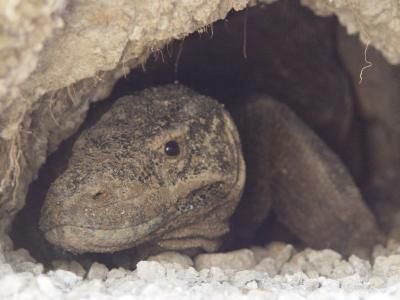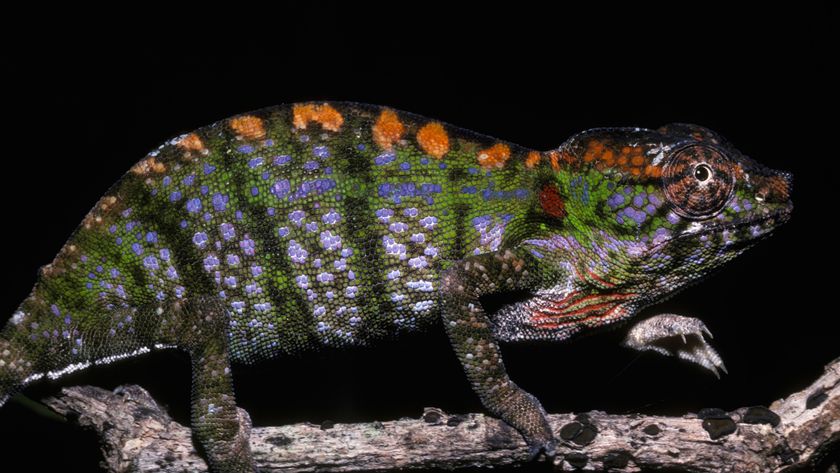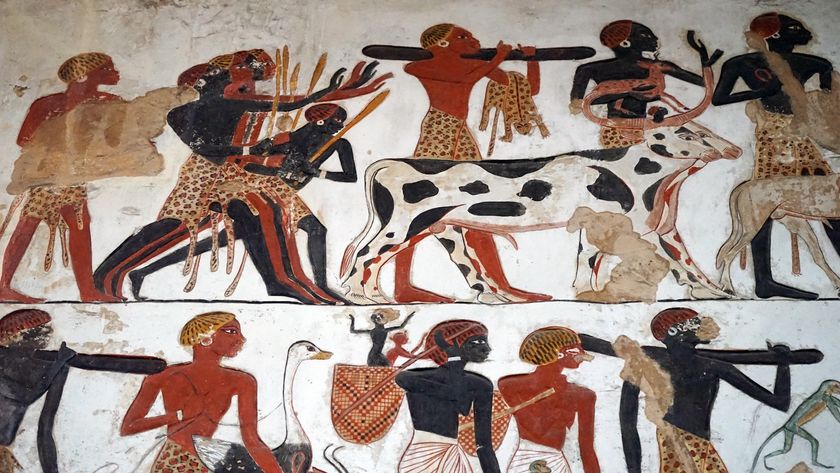Lives of Female Komodo Dragons Cut Short by 'Housework'

Female Komodo dragons live half as long as their male counterparts — 31 years on average compared with the guys' 62. A new study suggests the physical demands of lizard "housework," which includes building nests and protecting eggs, cut the females' life spans short.
A team of researchers studied 400 individual Komodo dragons from 2002 to 2010 in eastern Indonesia, the only native home of the giant predatory lizards. The scientists found that males and females are about the same size until they reach sexual maturity at around age 7. From then on, the females grow slower and only reach about 3.9 feet (1.2 meters) in length and 48 pounds (22 kilograms). The males, meanwhile, grow on average to 5.2 feet (1.6 m) in length and 143 pounds (65 kg).
"The sex-based difference in size appears to be linked to the enormous amounts of energy females invest in producing eggs, building and guarding their nests," Tim Jessop, a zoologist from the University of Melbourne, said in a statement Wednesday (Oct. 17). "The process can take up to six months during which they essentially fast, losing a lot of weight and body condition."
Both the male and female's growth rates could be seen as evolutionary adaptations to ensure reproductive success. The females (which can have virgin births) start putting all their energy into the chores of motherhood once they reach sexual maturity, while the males' energy reserves go into growing their bodies larger and larger to give them an edge in competing with other males for females and territory. [Fun Facts About Komodo Dragons]
"These results may seem odd to humans when the life span between Australian men and women differs by five years. But each species has different strategies to pass on their genes," Jessop said in a statement. "For example humans invest a lot of energy in few children as raising them is very energy intensive, whereas insects will have hundreds of offspring with no input into their rearing."
Komodo dragons are considered endangered. Though conservationists estimate up to 5,000 individuals are left in the wild, they are concerned that just 350 breeding females exist. Early female deaths may be aggravating competition between males over the remaining females, which could increase sexual dimorphism in the species, Jessop and his team said.
Their study was published online Sept. 19 in the journal PLoS ONE.
Sign up for the Live Science daily newsletter now
Get the world’s most fascinating discoveries delivered straight to your inbox.
Follow LiveScience on Twitter @livescience. We're also on Facebook & Google+.












